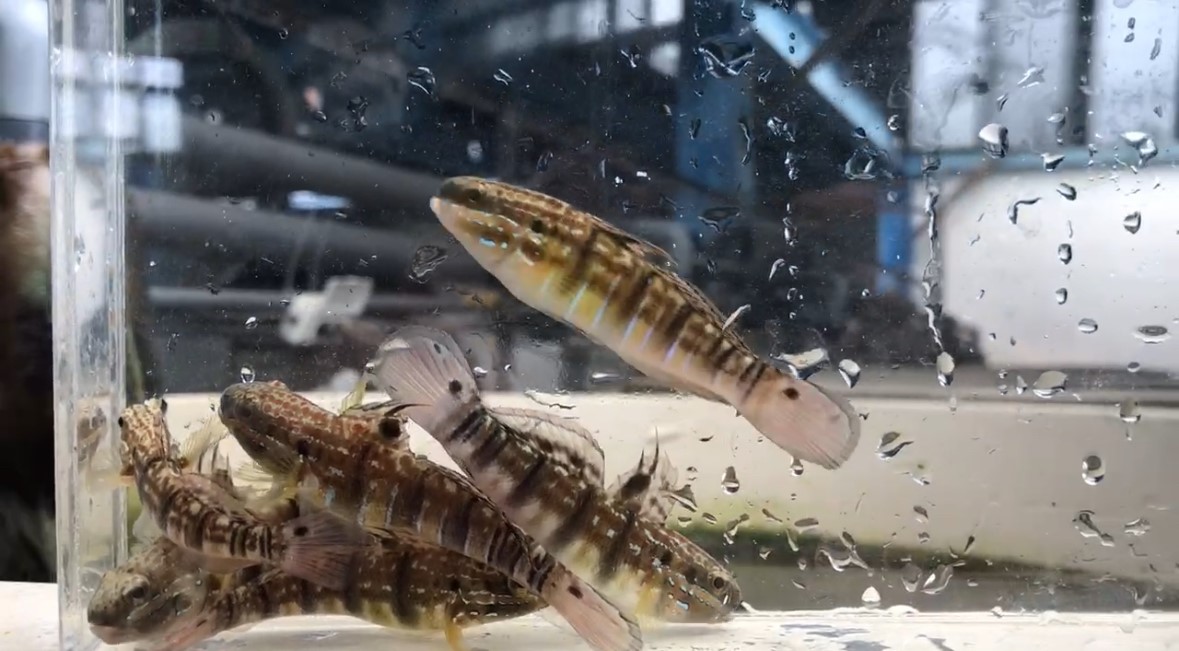News
Successful Artificial Breeding of the White-barred Goby by the Fisheries Research Institute: A new advancement in ornamental fish aquaculture
- PostDate:2024-10-17
The White-barred Goby (also known as the Ringed Goby) is a popular species in the international ornamental fish market, with each fish selling for approximately USD 35. In recent years, Biota, a company renowned for breeding ornamental fish, has successfully developed breeding techniques for three species of gobies (the Philippine Goby, Linne's Goby, and White-barred Goby) and introduced them to the market. The Fisheries Research Institute has also successfully developed artificial breeding techniques for the White-barred Goby and published its findings in international journals, making it the first institution in the world to do so.
The Fisheries Research Institute states that the White-barred Goby (Amblygobius phalaena) is distributed across Taiwan's eastern, southern, northern, and northeastern waters, as well as in Penghu, Xiaoliuqiu, Dongsha, and Nansha. It inhabits shallow seas with muddy sand, gravel, coral, and rocky reefs. Known for its variable body colors and habit of filtering substrate, it is often used as a "functional organism" in aquariums to help maintain substrate cleanliness in marine coral tanks. In Taiwan, it is commonly referred to as the "Ringed Sand Goby" or "Ringed Goby." Its price in the European and American markets ranges from USD 30–38 (approximately NTD 980–1,245) per fish, while in Taiwan, it is priced at approximately NTD 150–200.
Currently, all White-barred Gobies available on the market are wild-caught from Southeast Asian waters. These fish experience high mortality rates due to long-distance transportation, and once purchased, they often refuse food due to environmental stress, leading to gradual weight loss and the eventual decline of their functional and ornamental value. In contrast, fish collected from Taiwan's waters and then bred locally adapt more effectively to home aquariums. This breeding approach reduces losses associated with long-distance air transport and increases their acceptance of artificial feed, leading to a higher survival rate.
The Fisheries Research Institute points out that newly hatched White-barred Goby fry have very small mouth sizes and are highly sensitive to water quality. Traditional methods used for breeding clownfish fry cannot sustain their survival. Researchers at the institute have successfully identified suitable feed types for the fry’s early feeding stages and developed a water-quality environment conducive to their survival. This breakthrough in breeding the White-barred Goby will help reduce collection pressure on wild populations.
The related research findings have been published in the international academic journals Fishes and the North American Journal of Aquaculture, both representing first-ever global publications. This achievement adds another species to Taiwan's list of successfully bred marine ornamental fish and further highlights Taiwan's global leadership in marine fish artificial breeding research.
Contact Person:
Chin-Jung Hsu, Director, Marine Aquaculture Research Center, Fisheries Research Institute
Tel.: (02) 24622101 #2601
Mobile: 0921188343

Photo 1. White-barred Goby Breeding Fish

Photo 2. White-barred Goby Fry (50 days old)

Photo 3. Artificial breeding technology now enables the stable production of fry

